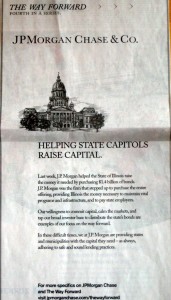MUNICIPAL BONDS
A difficulty with finance is that statistics are all backwards-looking. For instance, there were umpteen articles about how stocks “return x% over y number of years” or that “residential real estate is a solid investment based on returns in area x over y number of years”. We all know how those assumptions turned out.
While research is useful and assumptions need to be made, a crucial error that has lead to much of our financial malaise is due to retaining assumptions too long rather than chucking them aside when the underlying facts on the ground change. You also need to be aware of shifts in sentiment and try to anticipate what is going to happen next.
Specifically, municipal bonds have historically had a low default rate, less than 1%. And when they do default, investors generally have a relatively high “recovery percentage” (as opposed to Lehman when creditors received 7 cents on every dollar owed). Many investors view them as almost as safe as the debt of the Federal government. Municipal bonds are (generally) tax-free, so a municipal bond can have a lower debt coupon and still attract as many investors as a tax-adjusted amount from a corporate bond sale. I am generally speaking of general obligation debt, not the revenue bonds that might be tied to corporations or other initiatives (these carry a higher coupon and default rate).
